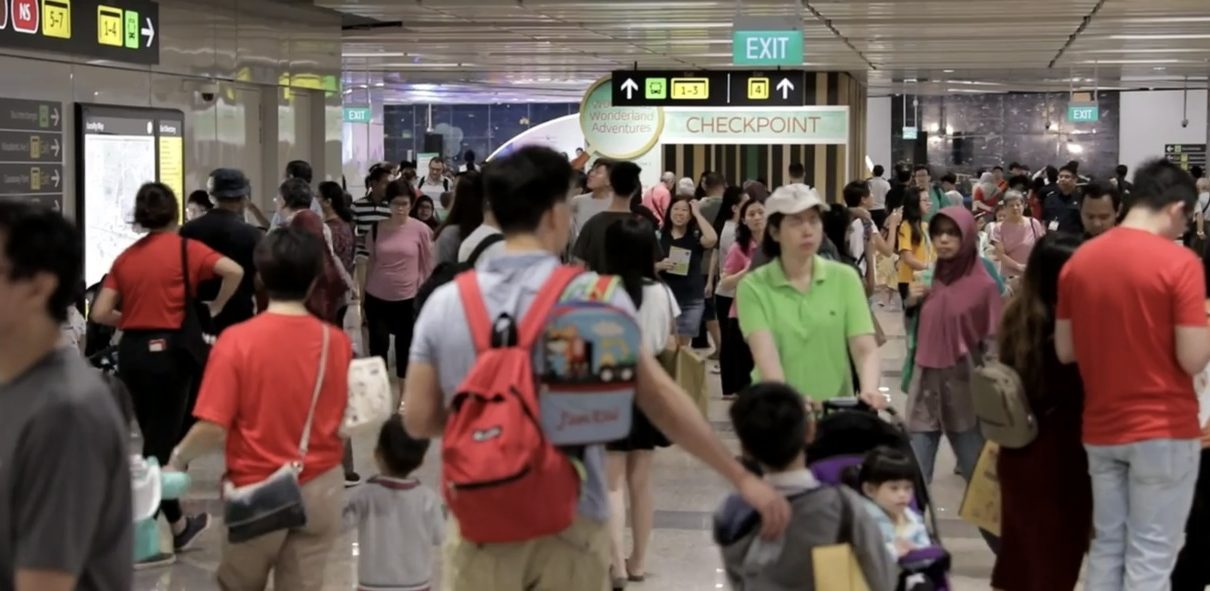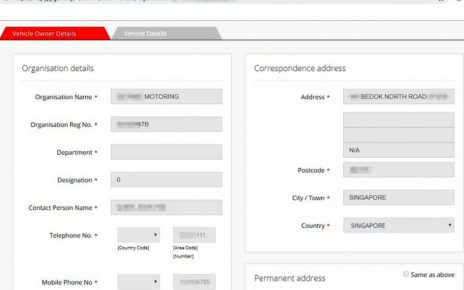
The Woodlands North MRT station, meant to connect to the delayed cross-border Rapid Transit System (RTS) Link between Singapore and Johor Baru, welcomed visitors yesterday as Singapore’s new MRT line opened for preview.
The MRT station will be adjacent to the RTS Link station “if and when” it materialises, said Transport Minister Khaw Boon Wan yesterday when he opened three stations on the Thomson-East Coast Line (TEL) a few weeks before passenger service starts on Jan 31.
For now, people will be able to visit the Woodlands North, Woodlands and Woodlands South stations to familiarise themselves with the various entrances, exits and amenities. Those who went to the open house yesterday got to ride the trains between the three stations for free. There will also be free train rides from Jan 31 to Feb 2.
The Woodlands North station, located between Woodlands Avenue 9 and Admiralty Road West, is among the biggest of the 32 stations on the TEL and was designed with the RTS Link in mind. The station is about 270m long, 48m wide and 22m below ground level.
As he declared the stations open, Mr Khaw said in a short speech that the Woodlands North station was “sized accordingly, to accommodate the peak-hour traffic travelling between Singapore and JB via the RTS Link”, and will be connected seamlessly to the RTS Link station at the basement concourse level.
The RTS Link agreement, first signed in 2018, has been delayed several times after Malaysia requested a suspension to review the project last year.
Malaysia has since proposed amending the scope and structure of the RM4 billion (S$1.3 billion) project to cut costs, and both sides are discussing the changes.
Mr Khaw’s comments on the RTS Link came a day after he met his Malaysian counterpart Anthony Loke in Singapore. Mr Loke later said in a Facebook post that they had a “fruitful discussion” and both sides were committed to concluding the RTS Link agreement by April.
The 4km cross-border MRT link from Woodlands in Singapore to Bukit Chagar in Johor was envisioned to help alleviate congestion on the Causeway.
As he opened the three stations in Woodlands town in Stage 1 of the TEL, Mr Khaw thanked residents in the area for their patience and understanding since construction started in 2014.
“Now it is time for you to enjoy the fruits of your patience,” he said.
The comment resonated with Ms Julianah Daud, 47, whose flat is located beside the new Woodlands station. The quality control inspector at a printer factory, who works night shifts, stacked a mattress against her room window to dampen the noise from construction in the past few years.
-
Expect longer waits at the start
-
Trains on the Thomson-East Coast Line (TEL) will be running at a lower frequency at the start, with fewer commuters expected in the early days.
When passenger service begins on Jan 31 for the TEL, trains will be running at a frequency of 10 minutes during peak hour and 15 minutes during off-peak hour.
This is slower than on other train lines, which have a train frequency of about three minutes during peak hour and seven minutes during off-peak hour.
Stage 1 of the line, comprising the Woodlands North to Woodlands South stations, will open first.
The Land Transport Authority said that as ridership increases, train frequencies on Stage 1 will be reviewed.
Transport Minister Khaw Boon Wan said opening Stage 1 first would allow the operators to run in the new systems, and was also a “no-brainer” as residents would be able to benefit immediately from the shorter commuting time.
The $25 billion construction cost is a “financial burden on taxpayers” but “is money well spent”, he said.
When fully operational, the TEL is expected to serve about 550,000 commuters daily in the initial years, and a million in the longer term.
Mr Rajesh Jeyachandran and his wife, Ms Thangam Karthigairajan, both 37 and IT professionals, said they look forward to the entire line opening as it could mean much shorter travel times to work.
They live in Marsiling and work in Raffles Place and Ang Mo Kio, respectively.
Said Mr Jeyachandran: “I think we will be able to reach the workplace faster. It will reduce our travel time by about 20 to 30 minutes.”
Tham Yuen-C
“I’m very relieved that it’s open,” she said, laughing. “I’m also excited, I felt like I can’t wait anymore, so we came today.”
Singapore’s sixth MRT line will span more than 43km and have 32 stations when completely open by 2024. It will be the longest MRT line, linking up neighbourhoods such as Thomson, Toa Payoh, Marine Parade and Bedok to the Central Business District.
While the $25 billion construction cost is a “financial burden on taxpayers… it is money well spent”, said Mr Khaw. He also said he has asked the Land Transport Authority for a briefing on the progress of the rest of the TEL, and will share more details in due course.
He quipped: “Like many of you, I am keen to know the estimated completion date of Stage 2. Stage 2 is of personal interest as Lentor station is near my house.”
Stage 2 comprises six stations from Springleaf to Caldecott, with two interchange stations – Bright Hill, which will link to the future Cross Island Line, and Caldecott, which will link to the Circle Line.
Yesterday’s open house drew Singaporeans from other parts of the island and train enthusiasts such as Presbyterian High School student Isaac Kong, 15. “I have been checking the train map updates,” he said. “I hope to try out all the MRT lines.”



